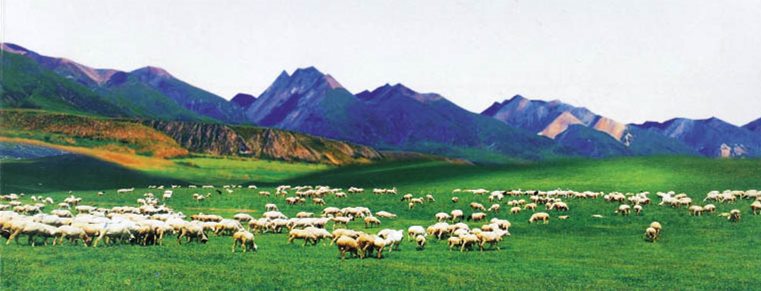Haixi: Pioneer of a Workable Plan for Ecological, Economic and Social Development
China Today by Huang Yuanjun & Hu Ge, October 14, 2016 Adjust font size:
Remarkable Ecological Effect
While creating huge economic benefits, goji berry planting is also proving to be of significant benefit to the environment, especially with regard to water conservation. The goji berry is a dwarf tree with good drought-resistance and high saline-alkaline tolerance. Planting goji berry trees, saxaul, and nitraria tangutorum in vast areas can consolidate oases and inhibit desertification, thus greatly contributing to conservation of water and soil and improving local people’s living and working conditions.
The goji berry needs less water than field crops, but produces higher economic returns. In addition, water-saving irrigation methods can be easily applied to goji berry planting. By adopting trickle irrigation, the water needed for growing goji berries is 3,450 cubic meters per hectare, which means a reduction of 10,500 cubic meters per hectare. The 303 million cubic meters of water saved over 29,000 hectares of goji berry plantations is particularly significant in the water-deficient Qaidam Basin.

The Alpine Farm of Haixi.
Farmers and herdsmen have directly benefited from improvements in the environment brought about by the wind reduction and sand fixation functions of goji berry planting. Farmers from Xiao-xiatan Village in Xiangride Town were relocated here from Haidong Prefecture in 2004. With barren wasteland and deserts hemming the village in from three directions, strong winds sweep through daily in winter and spring. New shoots are often thus buried in sand. Their slender income made desperate farmers consider moving again. However, in 2011, guided by the local government, Xiaoxiatan Village began to develop goji berry planting. Now, dramatic changes have occured in the village. Since turning desert into arable land, villagers’ annual per capita income now exceeds RMB 10,000. Xiaoxiatan is only one of many villages in Haixi Prefecture that is prospering from desertification control and the introduction of deserticulture.